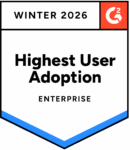October & November
Verify Company Information
Verify the following information for your company:
- Tax IDs
- Legal name
- Legal address
- Federal, state, and local (if applicable) tax identification numbers
- State unemployment rates
Check with your provider to see if you have access to this information in your Quarterly Tax Packet. If you find an error, let your provider know so they can help you correct it.
Verify Employee and Contractor Information
Audit employee data to ensure you do not miss critical Form W-2 information like complete Social Security numbers, employee names, and addresses. The Internal Revenue Service (IRS) may impose a penalty for each Form W-2 with a missing or incorrect Social Security number or employee name. If there are errors, you would then be subject to penalties.
Charges for each information return or payee statement
| Year Due | Up to 30 Days Late | 31 Days Late Through August 1st | After August 1st or Not Filed | Intentional Disregard |
|---|---|---|---|---|
| 2025 | $60 | $130 | $330 | $660 |
| 2024 | $60 | $120 | $310 | $630 |
| 2023 | $50 | $110 | $290 | $580 |
| 2022 | $50 | $110 | $280 | $570 |
| 2021 | $50 | $110 | $280 | $570 |
| 2020 | $50 | $110 | $270 | $550 |
| 2019 | $50 | $100 | $270 | $540 |
| 2018 | $50 | $100 | $260 | $530 |
| 2017 | $50 | $100 | $260 | $530 |
| 2016 | $50 | $100 | $260 | $520 |
| 2011-2015 | $30 | $60 | $100 | $250 |
The maximum penalty differs for small and large businesses, and there is no maximum penalty for intentional disregard. See the IRS website for more details.
Furthermore, employee information on Forms W-2 and 1095-C must match social security cards. For example, the IRS will return a Form W-2 as an error if an employee’s name is hyphenated on their social security card but not on their W-2 or 1095-C. Failure to verify this information as correct may result in penalties.
If you are not careful, these types of errors can add up to a sizable penalty. Employers can garner updated addresses from a new W-4 if an employee’s withholding allowances have changed or will change next year. Remind employees to fill out a new W-4 if their situation has changed:
- Ensure employee names are entered correctly.
- Confirm the accuracy of employee addresses.
- Confirm the accuracy of employee Social Security numbers.
Employers need to ensure that all employee data is accurate so that they can avoid W-2 reprint fees. Employers who use a payroll processing company may have an online service where employees can review and correct data. If so, encourage your employees to use it to review and edit critical data.
W-2 and 1099-NEC Filing Deadlines
| Due Date | Deadline |
|---|---|
| January 31st | Supply W-2s to employees and ex-employees. Supply 1099s to independent contractors and other payees. |
| January 31st | e-file or file paper W-2s and 1099s. |
It is recommended that you distribute W-2s and 1099s before the due dates. Mail or e-file copies of Forms W-2 and 1099 with government agencies. Send W-2s and W-3s to the Social Security Administration. Submit 1099s along with Form 1096 to the IRS. You may also have to mail or e-file copies of these forms to a specific state(s) and any state transmittal forms required, so check the requirements. Many localities also require copies of informational returns, so double-check this as well.
Form 940 Filing Deadlines
| Due Date | Deadline |
|---|---|
| January 31st | Submit Form 940 and deposit FUTA if your company owes any remaining amount. If you deposited all the FUTA tax when due, then you have ten additional calendar days to file Form 940. |
Submit Form 940 for Federal Unemployment Insurance (FUTA). The FUTA tax rate is 0.6 percent, which applies to the first $7,000 in wages you pay each employee during the year. However, if you do not pay your state unemployment taxes on time, your FUTA rate will increase to 6.0 percent.
For additional information, please visit our FUTA Credit Reduction page. If your company owes more than $500 in FUTA tax for the calendar year, you must deposit at least one quarterly payment. For more information, see IRS Publication 940, Employer’s Annual Federal Unemployment (FUTA) Tax Return.
Something to Consider: If your company is filing 10 or more Form W-2s, the Social Security Administration (SSA) requires electronic filing unless granted a waiver. You may file electronic W-2s using the SSA’s Business Services Online (BSO) website. There is no charge for this service, and you can register online.
Prepare for Veterans Day Payroll Processing
Veterans Day is a federal holiday that falls on November 11th. Adjust your payroll processing accordingly to prevent delays.
Start Processing All Year-End W-2 Adjustments
Before you process your last payroll of 2024, verify you have recorded and properly taxed all non-cash and cash income on the W-2 and quarterly 941 tax return. Typical W-2 adjustments include:
- Group-term life insurance over $50,000
- Personal use of a company vehicle
- Third-party sick pay
- Company-provided transportation or parking
- Non-qualified moving expense reimbursements
- Non-accountable business expense reimbursements or allowances
- Bonuses and other annual incentive pay
- Employer-paid education not related to the employee’s job
- Non-cash payments
S corporations (S corps)
Another common year-end adjustment is employer-paid health insurance for subchapter S shareholders who own at least two percent of the company. Although adjusting a W-2 record to reflect this amount is relatively easy, including it with a payroll run is best. This process ensures reporting on the applicable quarterly and yearly payroll tax returns. View the IRS requirements for subchapter S filing to ensure your company reports correctly.
Check for Excess Retirement Contributions
Contributions to 401(k), 403(b), or SIMPLE retirement plans cannot exceed IRS limits. The limits are as follows:
| Type of Retirement Plan | 2025 Limits | 2024 Limits |
|---|---|---|
| 401 (k) Elective Deferrals | $24,000 | $23,000 |
| 403 (b) Elective Deferrals | $24,000 | $23,000 |
| SIMPLE Employee Deferrals | $16,500 | $16,000 |
| Catch-Up Contributions (Employees 50 Years +) | $8,000 | $7,500 |
Process Manual and Voided Checks
Record any employee checks issued outside the normal payroll process and pay their tax liabilities on the applicable due dates. Confirm that all “manual checks” cut during the year have been accounted for and updated. Likewise, record all voided checks.
Some payroll checks cut throughout the year may not have been cashed. These checks should not be voided in the payroll system but should instead be considered unclaimed property and reported to the appropriate state agency. The unclaimed property office may be a division of your state’s Department of Revenue or the treasurer’s office.
To recap:
- Account for manual checks written during 2025.
- Confirm that all voided checks have been recorded.
- Report uncashed checks to the appropriate state agency as unclaimed property.
Review Third-Party Sick Pay
Third-party sick pay is a disability insurance benefit that provides employees with partial or full-wage benefit payments in the event of an injury or illness that prevents them from working. These payments are not made through the employer but through an insurance company, union plan, or state temporary disability plan.
Make sure to submit the total amount of any temporary disability payments your employees received in 2024 to your payroll provider no later than December 31, 2025. You can use the third-party sick pay statement you received from your carrier for reporting purposes.
Report Fringe Benefits
A fringe benefit is considered a form of payment for the performance of services. For example, you provide an employee with a fringe benefit when allowing the employee to use a business vehicle for personal use. Any fringe benefits you provide are taxable and must be included in the recipient’s pay unless the law expressly excludes it.
You must report the value of fringe benefits as taxable income unless the law expressly excludes it. Fringe benefits are subject to taxes, and employers must include the amounts on Form W-2 in boxes 1, 3, and 5. The amount will also be listed as a memo in box 16.
Prepare for Thanksgiving Payroll Processing
Thanksgiving Day is a federal holiday that falls on November 27th. Adjust your payroll processing accordingly to prevent delays.
Prepare for FUTA Tax Filings
Submit Form 940 for Federal Unemployment Insurance (FUTA). The FUTA tax rate is 6.0 percent, which applies to the first $7,000 you pay each employee as wages during the year. However, if you pay your state unemployment taxes on time, your FUTA rate will be reduced to 0.6 percent. For additional information, please visit our FUTA Credit Reduction page. If your company owes more than $500 in FUTA tax for the calendar year, you are required to deposit at least one quarterly payment. See IRS Publication 926, Household Employer’s Tax Guide, for more information.
Prepare for Benefits Renewal and Open Enrollment
This timeline can vary depending on your company’s benefits year. Review benefits renewals with current carriers and prepare an eligible employee/participant census to market a group for optional coverage with carriers.
Carriers require a complete census showing all eligible employees and all employees currently enrolled in benefits, along with the following:
- Dates of birth and genders of all employees, spouses, and dependents
- Zip codes for residence and work-site locations
Utilize your benefits administration system to conduct your benefits renewal reviews and prepare your census. Doing so will ensure all your data is accurate before submitting benefits plan information to your providers.
Prepare for ACA Annual Reporting
Determine if you had 50 or more full-time and full-time equivalent (FTE) employees in the previous calendar year and what type of insurance (self-insured or fully insured) you offered. If your provider offers an FTE Calculator, you can use it to determine how many full-time and FTE employees you had in the previous calendar year. Using this number and the type of coverage you offer, determine what forms you must use to report:
- Fifty or More Employees: Complete and file Forms 1095-C and 1094-C.
- Less Than 50 Employees (Self-Insured): Complete and file Forms 1095-B and 1094-B.
- Less Than 50 Employees (Fully Insured): The insurer is responsible for filing on behalf of the employer.
- Less Than 50 Employees (No Insurance): Reporting is not required.
Note: When the combined total of full-time and FTE employees in a controlled group is 50 or more, each individual employer is subject to reporting.
If you are required to report, gather the information you need to complete the applicable forms and determine which reporting method you will be using. Depending on how you report, you will need to compile data, including:
- The employee’s name, SSN, or date of birth (if SSN is unavailable), and address.
- The employer’s name, EIN, telephone number, and address.
- The months in which the employer offered coverage.
- The employee’s share of the monthly premium for self-only coverage (in some instances).
- The months in which a safe harbor (or other situation) applied (e.g., the employee was not a full-time employee).
ACA Annual Reporting Deadlines
| Due Date | Deadline |
|---|---|
| March 1st (automatic extension to March 2nd) | Supply Forms 1095-C to employees. |
| February 28th* | File paper Forms 1095-C with transmittal Form 1094-C.** |
| March 31st* | e-file Forms 1095-C with transmittal Form 1094-C.** |
*Starting tax year 2023, employers that file 10+ information returns with the IRS are required to file them electronically.
**Filers can obtain a 30-day extension with the IRS by submitting Form 8809 by the filing due date.
Review Employee Classifications
Review employee classifications regularly to ensure compliance. To manage your employee classifications, refer to the duties tests and guidance provided by the Department of Labor.
Review Medicare Part D Reporting
For employer-sponsored plans providing prescription drug coverage, Medicare Part D reporting is due on October 15. Also, distribute creditable coverage disclosure notices to Medicare-eligible participants on October 15. The Centers for Medicare and Medicaid Services (CMS) provides guidance and sample notice forms.
Conduct Budget Planning for the Next Year
Now is the time of year to start reviewing your existing budget and planning for next year. Here are some items to consider:
- Consult All Departments: You need a clear picture of what is required to oversee each department smoothly.
- Estimate Your Revenues for the Year: Know how your company is ending the year to determine the budget needed to reach next year’s revenue goals.
- Determine Your Expenses: Some expenses are concrete, while others can be moving targets. Take everything into consideration when calculating a figure.
- Don’t Forget Other Expenditures: Factor items like computers, company vehicles, and furniture into budgeting.
- Calculate Your Cash Flow: Generating your existing income statement is essential to determining your projected cash flow for the following year.
- Be Conservative in Your Budget: It’s helpful to have optimistic projections for the next year and be realistic. Leave some wiggle room just in case company goals are not met.
- Start Planning Early: Ideally, you should begin discussing the budget in October to ensure as much detail as possible. However, it’s never too late to start, as an annual budget should be monitored and adjusted.
- Monitor and Evaluate: Don’t create a budget just to forget about it in a few months. Monitoring your budget to see how things are trending and making necessary changes is essential.
December
Review and Update Files for Compliance
Review Your Information for ACA Annual Reporting
Review your information to avoid errors if you have determined you need to report. If your payroll provider offers ACA reporting with an error-checking algorithm, you can automatically perform the following tasks:
- Complete your Form 1094-C.
- Import and populate your 1095-C data.
- Review your 1095-C forms, edit, correct any conflicts, or manually add a 1095-C.
- Approve and print your 1094-C and 1095-C forms for distribution to employees and reporting to the IRS.
Review Your Record Retention Standards
Verify your department is adhering to record retention standards by keeping or purging individual records each year. Below are record retention guidelines with the length of time to keep records and which documents to retain:
| Length of Time | Records to Keep |
|---|---|
| 1 year | Physical exam results; employment tests, results and validation; ADA applications and other personnel records and requests for reasonable accommodation (keep for 1 year after personnel action). |
| 2 years | VETS-100; applications, resumes, other inquires sent to employer; help wanted ads, job opening notices, notices for opportunities for training, promotions, overtime, job opening notices sent to employment agencies or labor unions; employee personnel files (including hiring, disciplinary notices, promotions, demotions, discharges, training, tests, physicals, transfers, layoffs and recalls, job evaluations, merit systems, seniority systems). |
| 3 years | I-9s (or 1 year after termination); FMLA documentation (3 years after hire or 1 year after termination); polygraph tests; business records, including yearly total sales volume, total goods purchased; union contracts and individual employee contracts. |
| 5 years | Drug testing; OSHA forms 101, 200, 300A, and 301; compensation insurance, or for occupational injury or disease; first aid records of job injuries causing loss of work time. |
| 6 years | Standard ERISA documents (benefits plan, disclosure of Plan Description, Annual Reports Summary of Annual Reports, and Summary Plan Description). |
| 7 years | Employee wage records (time cards, wage rate tables, shift schedules, hours and days) explaining wage differentials, deductions from pay; all payroll records. |
| 30 years | Required medical exams and exposure records (OSHA). |
Review Retirement Plan Contributions
Review your retirement plan contributions and prepare annual or semi-annual employer contributions to retirement plans.
Prepare for Forms W-2 and 1099 Distribution
Reconcile your accounts and prepare for W-2s and 1099s to be distributed to employees and contractors in January. You’ll also want to take this time to prepare employer-required tax filings.
Finish Updating Employee Contact Information
Audit employee data to ensure you do not miss critical Form W-2 information like complete Social Security numbers, employee names, and addresses. The Internal Revenue Service (IRS) may impose a penalty for each Form W-2 with a missing or incorrect Social Security number or employee name. If there are errors, you would then be subject to the following penalties:
| Year Due | Up to 30 Days Late | 31 Days Late Through August 1st | After August 1st or Not Filed | Intentional Disregard |
|---|---|---|---|---|
| 2025 | $60 | $130 | $330 | $660 |
| 2024 | $60 | $120 | $310 | $630 |
| 2023 | $50 | $110 | $290 | $580 |
| 2022 | $50 | $110 | $280 | $570 |
| 2021 | $50 | $110 | $280 | $570 |
| 2020 | $50 | $110 | $270 | $550 |
| 2019 | $50 | $100 | $270 | $540 |
| 2018 | $50 | $100 | $260 | $530 |
| 2017 | $50 | $100 | $260 | $530 |
| 2016 | $50 | $100 | $260 | $520 |
| 2011-2015 | $30 | $60 | $100 | $250 |
Submit State Unemployment Tax Rate Change Notices
For most states, the computation date used to determine SUI tax rates remains July 1 prior to the calendar year.
While the immediate economic impacts of the COVID-19 pandemic have largely subsided, some state workforce agencies continue to manage trust fund balances that were affected by the pandemic years. As a result, employers should stay vigilant and monitor potential changes to their state unemployment insurance (SUI) tax rates this year and beyond, as some states may still adjust rates to replenish reserves.
Be sure to provide any rate change notices you receive to your provider as soon as possible to ensure accurate and timely payroll tax processing.
Finish Processing All Year-End W-2 Adjustments
Verify that all non-cash and cash income has been recorded and taxed properly so that it can be reported on the W-2 and the quarterly 941 tax return. Common W-2 adjustments include:
- Group-term life insurance in excess of $50,000
- Personal use of a company vehicle
- Third-party sick pay
- Company-provided transportation or parking
- Non-qualified moving expense reimbursements
- Non-accountable business expense reimbursements or allowances
- Bonuses and other annual incentive pay
- Employer-paid education not related to the employee’s job
- Non-cash payments
Another common year-end adjustment is employer-paid health insurance for subchapter S shareholders who own at least two percent of the company. Although adjusting a W-2 record to reflect this amount is fairly easy, it is always best to include it with a payroll run to ensure that it is reported on the applicable quarterly and yearly payroll tax returns. View the IRS requirements for subchapter S filing to ensure your company reports correctly.
Review Employee Classifications
Review employee classifications regularly to ensure compliance. Refer to the duties tests and guidance provided by the Department of Labor to manage your employee classification.
Finish Processing All Manual and Voided Checks
Any employee checks issued outside of the regular payroll process must be recorded, and their tax liabilities must be paid in accordance with the applicable due dates. Confirm that all “manual checks” cut during the year have been accounted for and updated in the system. Likewise, all voided checks should be recorded.
Some payroll checks cut throughout the year may not have been cashed. These checks should not be voided in the payroll system, but should instead be considered unclaimed property and reported to the appropriate state agency. The unclaimed property office may be a division of your state’s department of revenue or treasurer’s office.
To recap:
- Account for manual checks written during 2025.
- Confirm that all voided checks have been recorded.
- Report uncashed checks to the appropriate state agency as unclaimed property.
Prepare for Christmas Payroll Processing
Christmas Day is on Thursday, December 25th. Adjust your payroll processing accordingly to prevent delays.
Process Your Final Payroll for the Year
Check with your payroll provider for the last day you can submit the final payrolls of the year to avoid penalties and interest charges. Review your W-2s to verify the following information before processing your final payroll of the year:
- The spelling of employees’ names
- Social security numbers
- Addresses
- Wages
Many companies issue bonuses for company performance. If you give bonuses and withhold retirement deductions, ensure the amount does not exceed the annual limit. It is also crucial to process bonuses before the end of the year so tax payments are made on time to avoid penalties.
If you must process another payroll before the end of the year, you will have to review your company, employee, and contractor totals again.
Remember: Earnings and deductions for payments received in the next year for days worked in the current year are reflected in the new year. Payroll taxes are based on the date wages are paid.
Process Quarter-End and Year-End Reports
Close the quarter and file Form 941 Employer’s Quarterly Federal Tax Return by January 31, 2026. Wrap up the calendar year 2025 and prepare to process payroll in 2026; print and mail W-2s and 1099s to employees and contractors.
Report employee income and withholding amounts to employees, ex-employees who worked in the calendar year 2024, and government agencies using Form W-2. Use Form 1099s to report the income paid to independent contractors and other payees.
Prepare for New Year’s Day Payroll Processing
New Year’s Day is on Wednesday, January 1. Adjust your payroll processing accordingly to prevent delays.
January
Conduct Strategic Planning
Review existing policies and procedures, accrual balances, and next year’s communications to employees, including holiday and pay schedules. Plan for operations, upcoming projects, and strategic/continuous improvement initiatives. These may include:
| Planning Topic | What to Review |
|---|---|
| Hiring & Staffing | Meet with your hiring managers to evaluate their staffing needs by department staffing needs and plan sourcing strategies. Consider retirements, terminations, promotions, turnover, company strategy, and other changes to staffing levels. |
| Training & Development | Review employee development plans, training needs and/or requests, performance reviews, or training needs assessments to evaluate training needs. Schedule training and development activities for the next calendar year. |
| Employee Relations | Plan an employee engagement survey to evaluate morale. Plan, schedule, and update critical employee events, activities, initiatives, paid holidays, etc. Distribute attendance and vacation calendars/planners to supervisors and managers. |
| Performance Management | After reviews are finished, plan for the next performance management cycle, including goal setting for the next calendar year. Work with managers to schedule follow-up, feedback, and support activities to enhance performance. |
| Management Development | Review exit surveys, employee feedback, and other information about managers. Schedule recently promoted supervisors or managers requiring additional training for supervisory training or leadership development. |
| Compensation | Evaluate compensation and incentive practices for each of your employees and plan new pay programs. Schedule which salary surveys you will participate in next year. Budget for pay adjustments and merit increases. |
| Benefits | Review ACA compliance and reporting regulations in effect and schedule dates and tasks for compliance. Plan your benefits strategy for the upcoming year including benefit additions, enhancements, and removals. |
| Compliance | Conduct an HR audit. Review federal and state compliance trends for the next calendar year. Plan proactive efforts to maintain compliance or modifications to existing practices to ensure compliance. |
| Continuous Improvement | Plan initiatives (like deploying an HRIS) to streamline and make HR processes more efficient. Enhance processes and systems to reduce errors and improve the quality of deliverables. Evaluate vendors for HR services. For other systems in use, install updates for the most efficient use of systems and reporting. |
Review OSHA Form 300A for Annual Reporting
Review your company’s OSHA Form 300A for the required annual posting from February 1 to April 30 in a common area for employees.
Post Updated Federal and State Compliance Posters
It is essential to post the appropriate compliance posters, or employers may be subject to penalties. Depending on the employer, these posters may include:
- Job Safety and Health Protection (OSHA)
- Equal Employment Opportunity
- Fair Labor Standards Act (FLSA)
- Family Medical Leave Act (FMLA)
Visit the Department of Labor (DOL) for assistance with poster compliance requirements. Ensure you also visit your state’s labor department page to determine which state compliance posters you must post.
Conduct Forecasting for Future Hiring Needs
When forecasting future hiring, looking at your company’s current and future goals is essential. Are you planning for growth? Most companies want sustainable expansion from year to year. The way to achieve those goals and stay on target is to grow your workforce. Here are some questions to consider when planning for future hiring:
- Will your company launch new products that will require additional talent for a smooth process?
- Is your company planning to expand into other states or open other locations?
- What is your current employee turnover rate?
- Do you anticipate any changes in your workforce? For example, do you have several employees who will be retiring soon?
- Is your company planning to invest in any new technology? For example, are you planning to implement new HR software next year?
- Are there going to be any changes to your company’s goals going into next year?
Review and Update Employee Deductions
The first payroll of the year is an opportune time to review and update your employee deductions. Don’t forget to check deductions like:
- Medical
- Dental
- Life Insurance
- Retirement deductions – 401(k), 403(b)
- Other voluntary deductions
Review and Update Retirement Plan Catch-Up Contributions
Retirement plan deductions and catch-up contributions will be deducted automatically from the first payroll of the new year. Review your retirement plans, report any needed changes, and submit those updates with your first payroll.
Finish ACA Reporting
Make sure you wrap up ACA annual reporting and filing to avoid penalties for late or incomplete paperwork:
- Failure to file complete and accurate Forms 1094-C by the form deadlines will result in penalties of up to $270 per return.
- Failure to file and provide correct information on Form 1095-C could result in a $270 penalty per return.
Review State Minimum Wage Changes
Click here to view minimum wage rates by state. If any changes apply to your business, contact your payroll provider.
Review SUTA Wage Base Changes
Click here to view a complete list of state unemployment wage bases. Contact your payroll provider if any changes apply to your business.
If you receive a new state unemployment insurance rate notice for the new year, please send it to your payroll provider for updating.
Prepare for Martin Luther King, Jr. Day Payroll Processing
Martin Luther King Jr. Day is a federal holiday that falls on Monday, January 19th. Adjust your payroll processing accordingly to prevent delays.
Communicate With Employees About Their W-2s
If your employees receive paper copies only, communicate when they can expect to receive their Form W-2s in the mail. If you can provide your employees with online access to their W-2s, let them know how to do so.
Distribute 1095-Cs to Employees
January 31, 2026, is the deadline to distribute Forms 1095-C to your employees.
Pay Your FUTA Invoice
If additional funds are required for your Federal Unemployment, check with your payroll provider to determine when your account will be debited.
File and Distribute W-2s and 1099s
January 31, 2026, is the deadline to file Forms W-2 and 1099-NEC by paper or electronically. The deadline is also to distribute W-2s to your employees and 1099-NECs to independent contractors.
Employers, like independent contractors, must file Form 1099-NEC for non-employees paid compensation of $600.00 or more (including fees, commissions, prizes, and awards) during the year. 1099-NECs are filed with Form 1096 each year. Form 1099-MISC is primarily used to report miscellaneous income, such as rent or payments to an attorney.
File Forms 1094-C and 1095-C
February 28, 2026, is the deadline to file paper Forms 1094-C and 1095-C. If you are filing electronically, you have until March 31, 2026, to file.
Year-End Resources
- Year-End Payroll and HR Checklist: Use this checklist to keep track of your crucial year-end payroll tasks.
- SUTA Wage Bases: Find out what your SUTA wage base is for the new year.
- FUTA Credit Reductions: Check to see if your state has a FUTA credit reduction.
- Payroll Taxes: Rates and Changes: Stay up-to-date on payroll tax changes yearly.
- Minimum Wage Rates: Look at each state’s current minimum wage rates.
Helpful Articles
- What’s the Difference Between Form W-2 and Form 1099-MISC?
- Why Are W-2s and Final Pay Stubs Different?
- How to Avoid W-2 Errors
- Navigating ACA Reporting Forms 1094-C, 1095-C
- How to Choose Form 1095-C Codes for Lines 14-16
Year-End Links
- General Instructions for Forms W-2 and W-3
- Employment Tax Due Dates
- About Form 940 Employer’s Annual Federal Unemployment (FUTA) Tax Return
- SSA Business Services Online Registration
- IRS Information Reporting by Applicable Large Employers
- IRS S Corporations
- IRS About Publication 15-B, Employer’s Tax Guide to Fringe Benefits
- What Employers Need to Know About Repayment of Deferred Payroll Taxes
- Application for Extension of Time to File Information Returns














